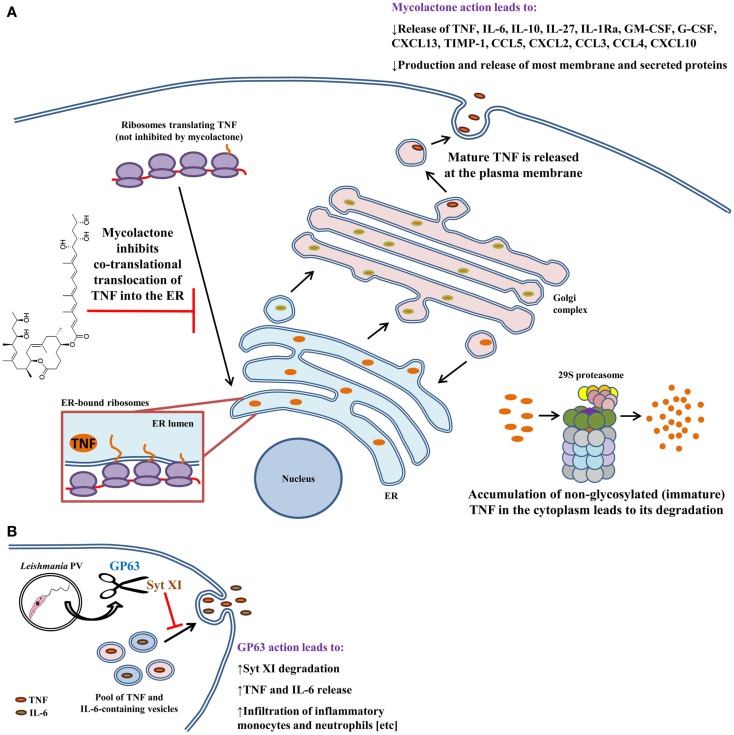Figure 2.
Modulation of macrophage cytokine secretion by Mycobacterium ulcerans bacteria and Leishmania promastigotes. Disruption of cytokine release has evolved as an effective means by which several pathogens contravene the immune response. (A) M. ulcerans employs mycolactone to sabotage the immune response by inhibiting the secretion of more than 17 cytokines, chemokines, and inflammatory mediators. TNF, as well as other cytokines and chemokines, undergo post-translational modifications in the ER and Golgi prior to being shepherded outside of the macrophage. Mycolactone hampers delivery of TNF into the ER. As a consequence, immature protein that accumulates in the cytoplasm is eventually degraded by the proteasome. (B) Unlike M. ulcerans, Leishmania promastigotes trigger the release of TNF and IL-6 from infected macrophages via GP63-mediated degradation of Syt XI (a negative regulator of cytokine release). In vivo, GP63 also facilitates the infiltration of inflammatory monocytes and neutrophils to the infection site. Both of these phagocytes are infection targets for Leishmania and aid in establishing infection. These findings can be explained by the fact that TNF and IL-6 mediate phagocyte infiltration by upregulating the expression of adhesion molecules and chemokines. Arrows indicate multiple steps and drawings are not to scale.

